The Mogao Caves, also known as the “Thousand Buddha Grottoes,” are an iconic series of cave temples located near Dunhuang in China’s Gansu Province. Carved into cliffs between the Singing Sand Dunes (Mingsha Shan) and the Sanwei Mountains, this UNESCO World Heritage Site represents one of the most extraordinary Buddhist cultural relics and artistic achievements in the world. Renowned as a center for religious, cultural, and artistic exchange on the ancient Silk Road, the Mogao Caves exhibit a unique fusion of Buddhist devotion and Chinese artistic craftsmanship. This article delves into the Mogao Caves' historical origins, architectural and artistic features, religious and cultural significance, and ongoing preservation efforts.
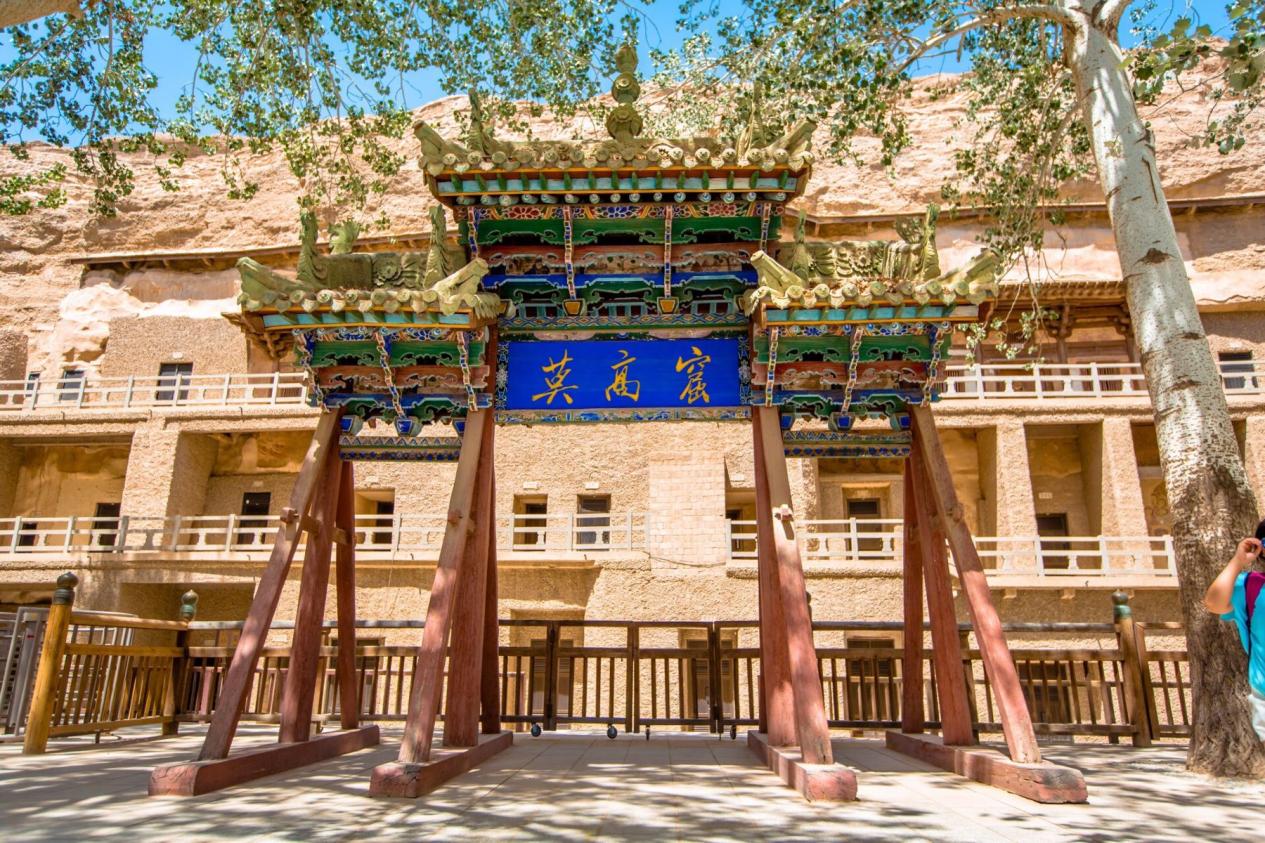
1. Historical Background of the Mogao Caves
The creation of the Mogao Caves dates back to 366 AD, during the period of the Sixteen Kingdoms, when a Buddhist monk named Le Zun was moved by a vision of a thousand Buddhas glowing in golden light across the cliffs. Inspired by this vision, he carved the first cave, establishing the foundation for what would become an iconic Buddhist sanctuary. Over the following centuries, successive dynasties including the Northern Wei, Sui, Tang, and Song continued to expand the complex, commissioning hundreds of additional caves and contributing a rich diversity of Buddhist art.
Situated along the Silk Road, the Mogao Caves quickly became a cultural and spiritual center that attracted monks, pilgrims, traders, and travelers. This strategic location facilitated the blending of artistic and religious traditions from across Central Asia, India, Persia, and the Mediterranean, contributing to the distinct cultural diversity evident in the murals, statues, and religious symbols within the caves.
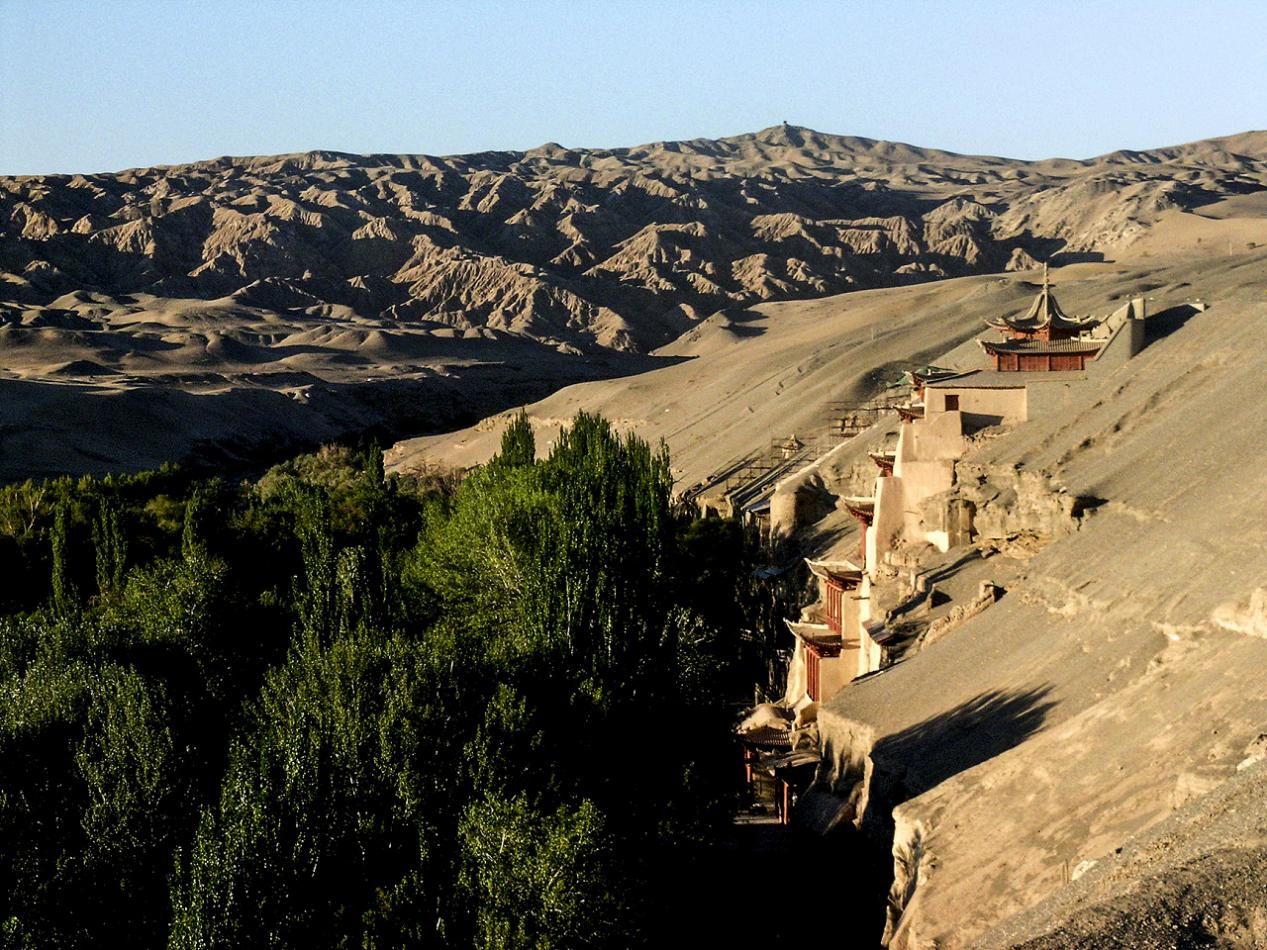
2. Architectural and Artistic Features of the Mogao Caves
The architectural design of the Mogao Caves reflects a remarkable blend of Buddhist cave-temple traditions influenced by India alongside native Chinese adaptations suited to the desert landscape. Each cave serves as a shrine, containing Buddhist images, vivid murals, and in many cases, intricate sculptures. Ranging from small meditation chambers to expansive worship halls, the caves display elaborate facades and sacred interiors.
One of the most striking aspects of the Mogao Caves is the extensive array of murals covering more than 45,000 square meters. These murals encompass an extraordinary range of themes, from Buddhist scriptures and Jataka tales (accounts of the Buddha’s past lives) to scenes of celestial paradises and depictions of daily life along the Silk Road. The murals of the Western Pure Land—a heavenly paradise of Amitabha Buddha—are particularly notable for their detail, symbolic depth, and the hopeful spiritual message they convey to worshippers.
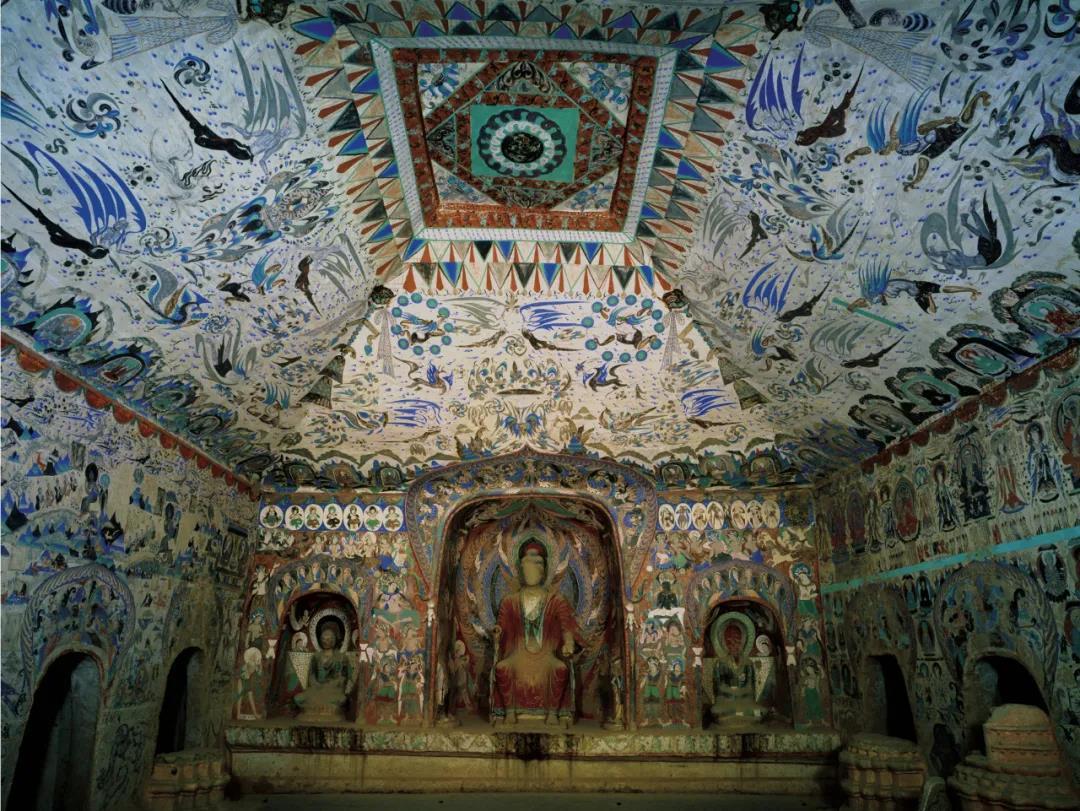
The Mogao sculptures, often crafted from clay and wood, are similarly impressive. Some statues are monumental in size, such as the 34-meter Buddha in Cave 96, known as the “Nine-Storey Buddha,” which ranks among the largest Buddha statues in China. These sculptures are imbued with meticulous detail and vibrant expression, portraying various spiritual figures such as bodhisattvas, guardian deities, and attendants, each serving as a visual embodiment of Buddhist philosophy.
3. Cultural and Religious Significance
The Mogao Caves stand as a testament to the Silk Road’s historical role in cultural and religious exchange. They represent a significant fusion of Buddhist, Daoist, and Confucian elements, showcasing diverse sects, doctrines, and practices that flourished over time. The caves also provide valuable insights into the social, economic, and cultural life of ancient China, with the artwork reflecting details of attire, customs, and the lives of individuals from diverse backgrounds and regions.
The significance of the Mogao Caves is further highlighted by the discovery of the “Library Cave” (Cave 17) in 1900, where thousands of manuscripts, paintings, and documents had been preserved. Among these manuscripts are Buddhist texts, Confucian classics, Daoist scriptures, and administrative records in various languages, illustrating Dunhuang’s extensive reach as a cultural and religious center and its cosmopolitan character. These manuscripts now serve as primary sources for historians, linguists, and religious scholars studying ancient China and the Silk Road.
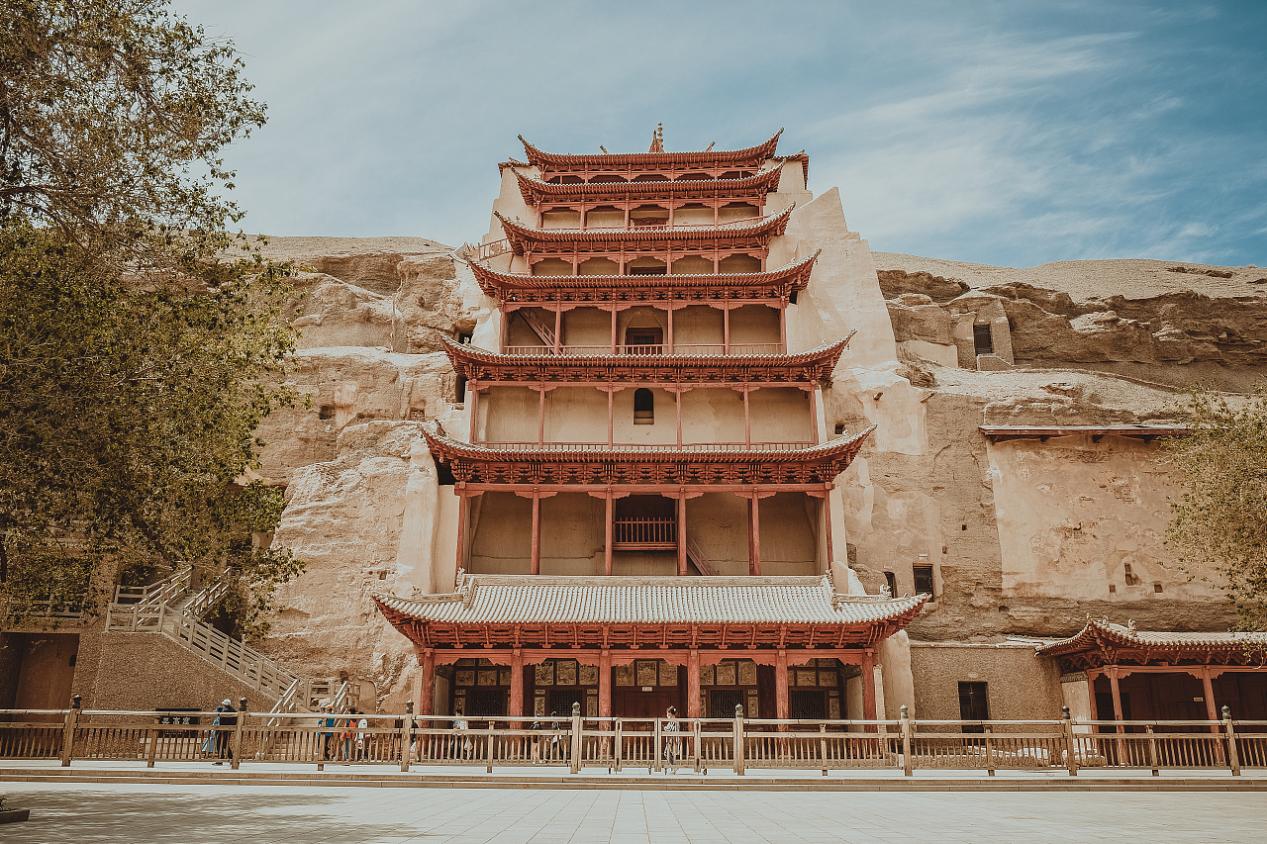
4. Cultural Legacy and Preservation Efforts
In recognition of their invaluable historical and cultural importance, the Mogao Caves were designated a UNESCO World Heritage Site in 1987. This designation has led to significant preservation efforts aimed at protecting and maintaining the integrity of the caves. The Dunhuang Academy, together with international organizations, has been at the forefront of conserving these ancient artworks through advanced techniques such as digital preservation, climate control, and 3D scanning. These efforts allow global audiences to virtually experience the beauty of the Mogao Caves while preserving the site from excessive foot traffic and environmental degradation.
Despite these preservation initiatives, the Mogao Caves continue to face challenges due to natural erosion, human activity, and climatic changes. Ongoing preservation and education efforts are essential to ensure that this cultural treasure endures for future generations. Collaborative research programs and public awareness campaigns play a vital role in fostering global recognition of the site’s cultural significance.
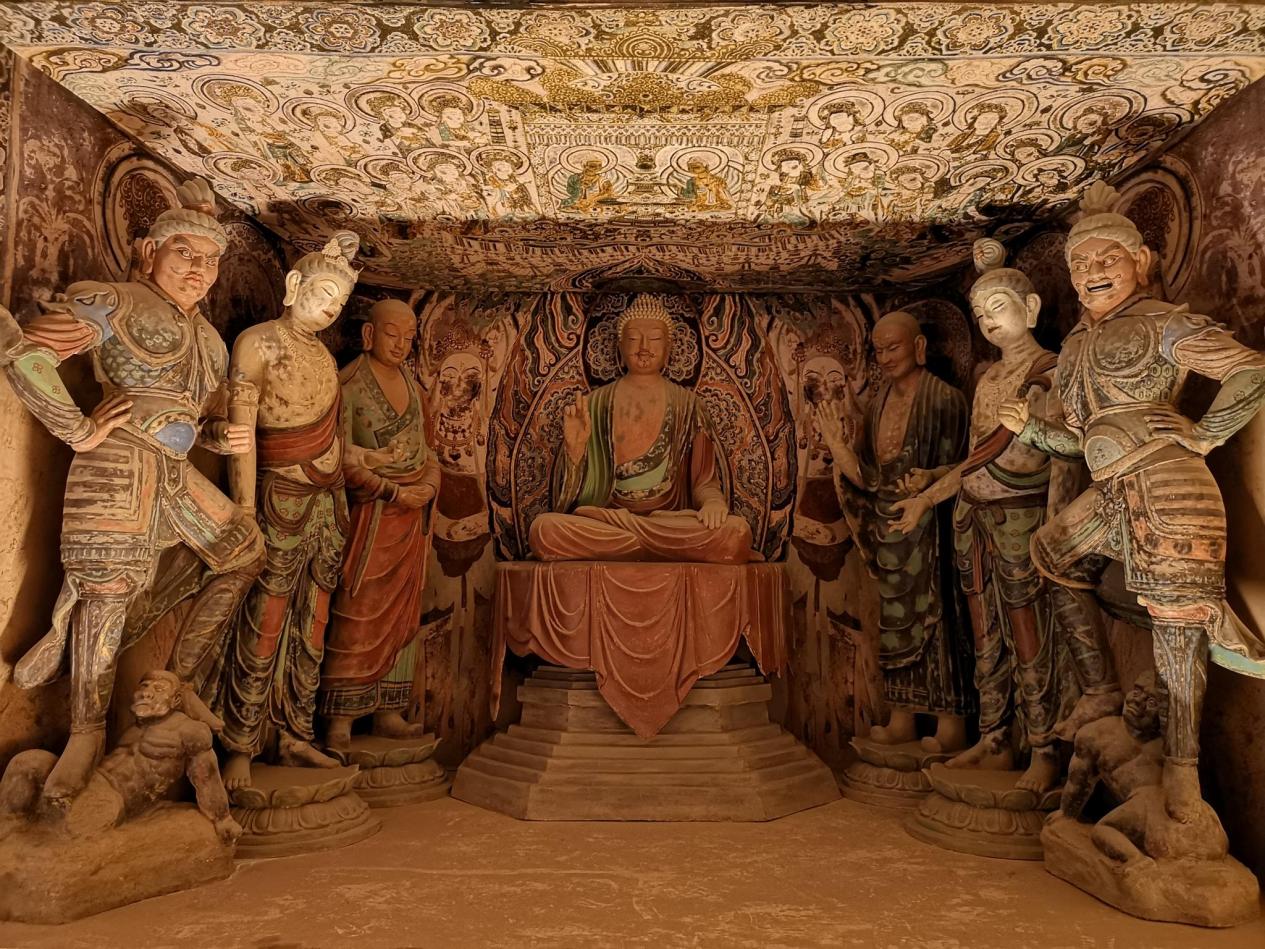
Conclusion
The Mogao Caves are an extraordinary repository of religious, cultural, and artistic heritage, embodying the spirit of the Silk Road and the confluence of civilizations it facilitated. With its vast murals, impressive sculptures, and rare manuscripts, the Mogao Caves preserve an unparalleled legacy of Buddhist devotion and cross-cultural exchange. As a vibrant symbol of ancient Chinese civilization and Buddhist heritage, the Mogao Caves continue to inspire wonder, offering invaluable insights into the past while reminding us of the need to preserve these timeless achievements for generations to come.



